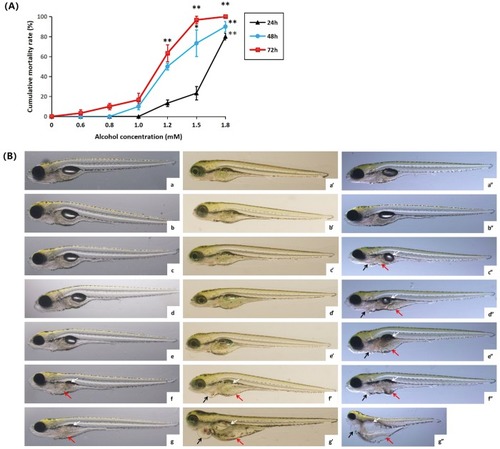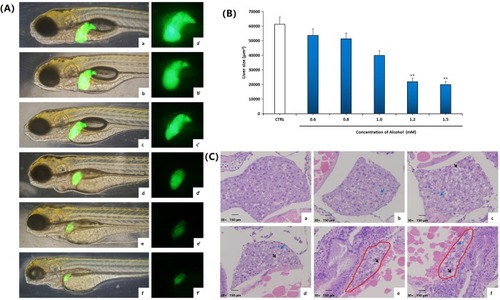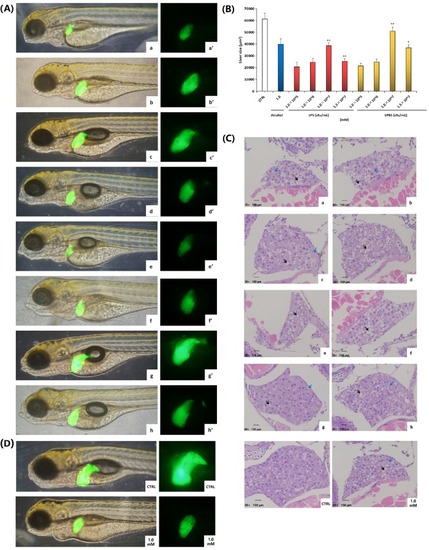- Title
-
Protective effect of lactobacillus plantarum on alcoholic liver injury and regulating of keap-Nrf2-ARE signaling pathway in zebrafish larvae
- Authors
- Liu, Y., Liu, X., Wang, Y., Yi, C., Tian, J., Liu, K., Chu, J.
- Source
- Full text @ PLoS One
|
(A) Lethality of solvent ethanol to zebrafish after exposure of 24, 48 and 72h at different ethanol concentrations. The experiment was repeated for three times, with 30 zebrafish larvae in each group. Baseline adjusted values (mean±SD) are presented. * |
|
Morphological observation of liver after the liver green fluorescence transgene zebrafish T3 ( |
|
After 24 h of 1.0 mM alcohol injury, replaced ethanol solution with ethanol solution containing LPS with dosages of 1.0×105 cfu/mL (a), 1.0×106 cfu/mL (b), 1.0×107 cfu/mL (c) and 1.5×107 cfu/mL(d) or LPBS with dosages of 1.0×105 cfu/mL (e), 1.0×106 cfu/mL (f), 1.0×107 cfu/mL (g) and 1.5×107 cfu/mL(h) for repair for 48 h, and observe the morphological change of the zebrafish larvae. The liver part was marked with a red circle. Swim bladder reduction of the zebrafish larvae was pointed out by the white arrow, and yolk sac edema was pointed out by the red arrow. |
|
Morphological observation of zebrafish liver after the liver green fluorescence transgene T3 ( |




